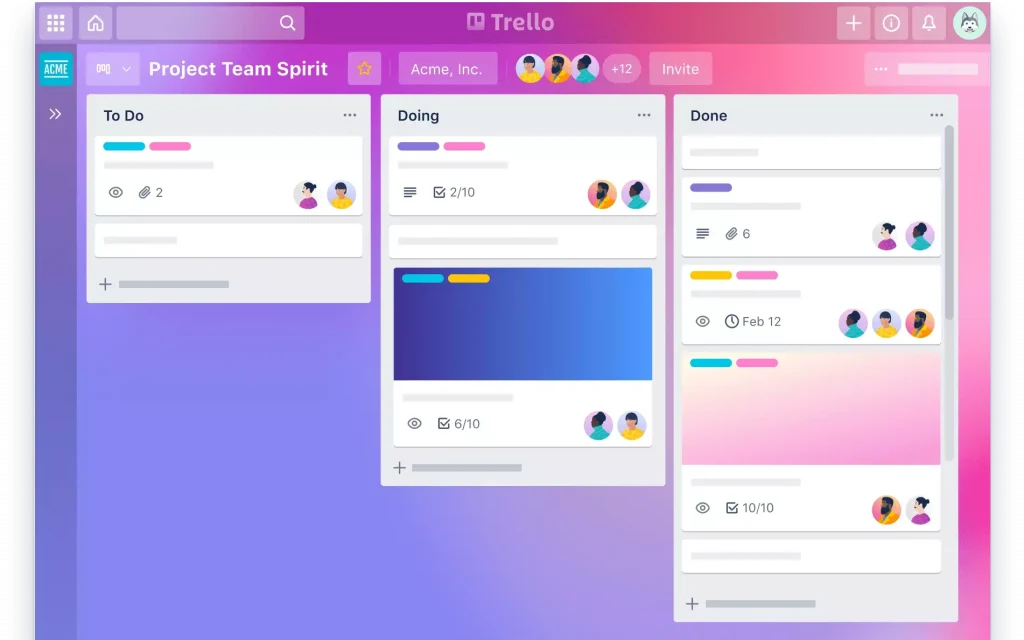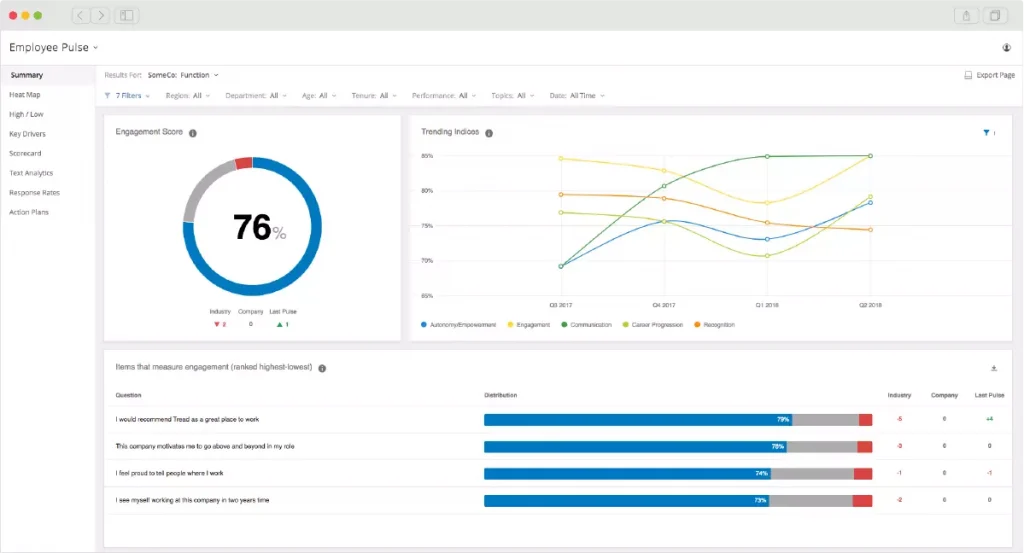Articles & Guides
Employee Journey: how to map employee experience in 6 simple steps
in a nutshell
Build step-by-step the perfect journey for your employees thanks to practical examples, insights about the digital contribution to employee experience, and a downloadable canvas. Ready? Warm up the engine, ’cause you are the driver.


Don’t have time to read it all?
Here’s a brief summary of the key points in this guide.
What is the Employee Journey?
A stimulating work experience can only bring benefits, as long as it fulfills all of the employee’s expectations during the employee journey. It is a 5-step framework which begins even before hiring and ends with leaving the company.
The Human Resources department must ensure that the employee goes through a positive experience during his or her whole career with the company, passing through consecutive stages:
- 1) Employer Branding
- 2) Recruiting
- 3) Onboarding
- 4) Daily Work Activity
- 5) Offboarding
Briefly, an employee’s work journey is nothing more than a journey through their work experience, their relationships with other people, the feelings accumulated, and the rewards received.
[DIVE IN]
What are the goals of building an Employee Experience?
Employee experience aims to transform a potentially monotonous and demotivating work career into an exciting and constructive journey. We could recognize 3 predominant goals:
- • Build a positive work environment
- • Increase productivity by shortening the operations entrusted to HR
- • Retain employees for a long time
[DIVE IN]
How can I implement and monitor Employee Experience strategies?
Designing the employee experience is a task as important as difficult. It involves a multiplicity of actors, environments, and tools, as well as having to maintain a certain qualitative constancy throughout the employee relationship.
That’s why I offer 6 simple tips for keeping track of the employee experience processed by your company.
- 1) Set concrete goals
- 2) Develop a strategy based on design thinking
- 3) Adopt a holistic perspective
- 4) Put yourself in the employee’s shoes
- 5) Treat employees as if they were customers
- 6) Measure your success with continuous and pervasive feedback systems
[DIVE IN]
What about Employee Engagement?
Employee experience and employee engagement are two closely related concepts that are often mistakenly used interchangeably. Indeed, employee engagement:
- • Has a short-term goal
- • Refers to the immediate needs of the worker
- • Depends on the employee experience
- • Affects employee experience effectiveness
- • Provides a short-term motivational boost
[DIVE IN]
LEARN TO RIDE
Ready to surf the digital wave and become a leader in your industry? Join Execute.Club, where executives and managers like you can access resources, connect with peers, and get the no-nonsense help you need to succeed in the digital era.
Enter the ClubThe Journey starts here
An employee’s work journey is nothing more than a journey through their work experience, their relationships with other people, the feelings accumulated, and the rewards received. After all, a stimulating work experience can only bring benefits, as long as it fulfills all of the employee’s expectations during the employee journey – a journey that begins even before hiring and ends with leaving the company.
An introduction to the Employee Journey
Sometimes employees can be more important than customers. This is an increasingly topical consideration adopted by the most forward-thinking managers. If employees are well managed and encouraged, in fact, customers will be the first to notice, and the entire company will benefit. After all, a company’s staff is the ultimate expression of the company’s essence: if employees are not satisfied or integrated into the organization, their operations, the company’s image, and overall productivity will suffer.
In a competitive and fierce market, companies that want to make a difference cannot let the best prospects get away. To attract and retain talent, therefore, they will have to offer them an optimal experience typically reserved for consumers. This is the consumerization concept of the HR department, more and more operationally similar to marketing colleagues. But today’s employees demand a work environment that resembles the dynamics of private life. They want personalized information, tailor recommendations, and they are in a hurry.
Here is where Human Resources, then, is increasingly striving to ensure that its employees build ideal, tailored work careers so that this has long-term positive repercussions on the customer experience. While customer fulfillment remains the key to business success, savvy companies recognize the need to give the same attention to their employees. The watchword thus becomes employee experience, a concept that involves the entire “employee journey”.
An overview
What is the employee journey?
Gallup (a U.S. analysis and consulting firm) data say that 48 percent of those who have jobs are simultaneously actively seeking new employment. A fact that, little by little, has prompted managers to consider their employees as customers whose contributions can be essential to business growth. Actually, having a job that keeps you motivated is a win-win situation, as long as it lives up to your expectations starting from when you first apply to when you eventually leave.
The 5 stages of the employee journey

The Human Resources department must ensure that the employee goes through a positive experience during his or her whole career with the company. In concrete terms, some consecutive stages could be identified.
1) It starts with Employer Branding actions – i. e., the set of communication strategies aimed at promoting the brand – combined with employee advocacy programs, to get the resources already in the company to dress up as spokespersons for their employer. After all, a negative experience with a company, product, or service spreads quickly, and taints its reputation. As a result, it becomes more complicated to convince talent to join your cause. Introducing an inviting image of yourself to potential candidates, on the other hand, is no small advantage.
2) It continues with the recruiting phase, which is the acquisition of new employees. The goal is to build an impactful, engaging, and seemingly unique first meeting so that the applicant – even if he or she is later rejected or does not accept the job offer – exits the interview with a happy image of the company. After that, it is a good idea to evaluate the conduct of the application and the timing of the applicant’s response to the offer.
3) Hired candidates move on to the onboarding step: the process of becoming acquainted with the company’s environment and culture. The new resource will assess the satisfaction of the expectations created in the previous stages and begin to build their personal relationship with the company.

4) The meatiest stage is the central one: daily work activity and the real or perceived benefits associated with it. To be sure that an employee will turn out to be fulfilled in his or her occupation for a long time and go on a fruitful and long-lasting journey, the company should strive to ensure an impeccable work-life balance and optimize collaboration among colleagues. The employee should be rewarded through pay, career prospects, and most importantly, involvement in company strategies and goals. An organization, for example, might encourage its employees to take on new professional challenges by attending training, refresher, or coaching courses.
5) Last but not least, it should not be forgotten that even last impressions count. Offboarding (the phase of exit, voluntary or otherwise) remains a delicate moment, and as such should be conducted in an impartial, understanding, and appreciative manner.
The comparison with the much more established customer journey is obvious: the focus, today, doubles and involves both the customer and the employee. Only in this way a company can safeguard a brand reputation capable of attracting talent, enhancing performance, and ensuring competitiveness.
Indeed, it is a recent habit to want employees to assimilate the company’s values so that they become advocates and actively spread a positive brand image. Thus, employee experience – meaning the need to optimize each stage of the employee journey – becomes the key to motivate and retain the most enterprising personalities.
in the short term
Employee experience: what is it?
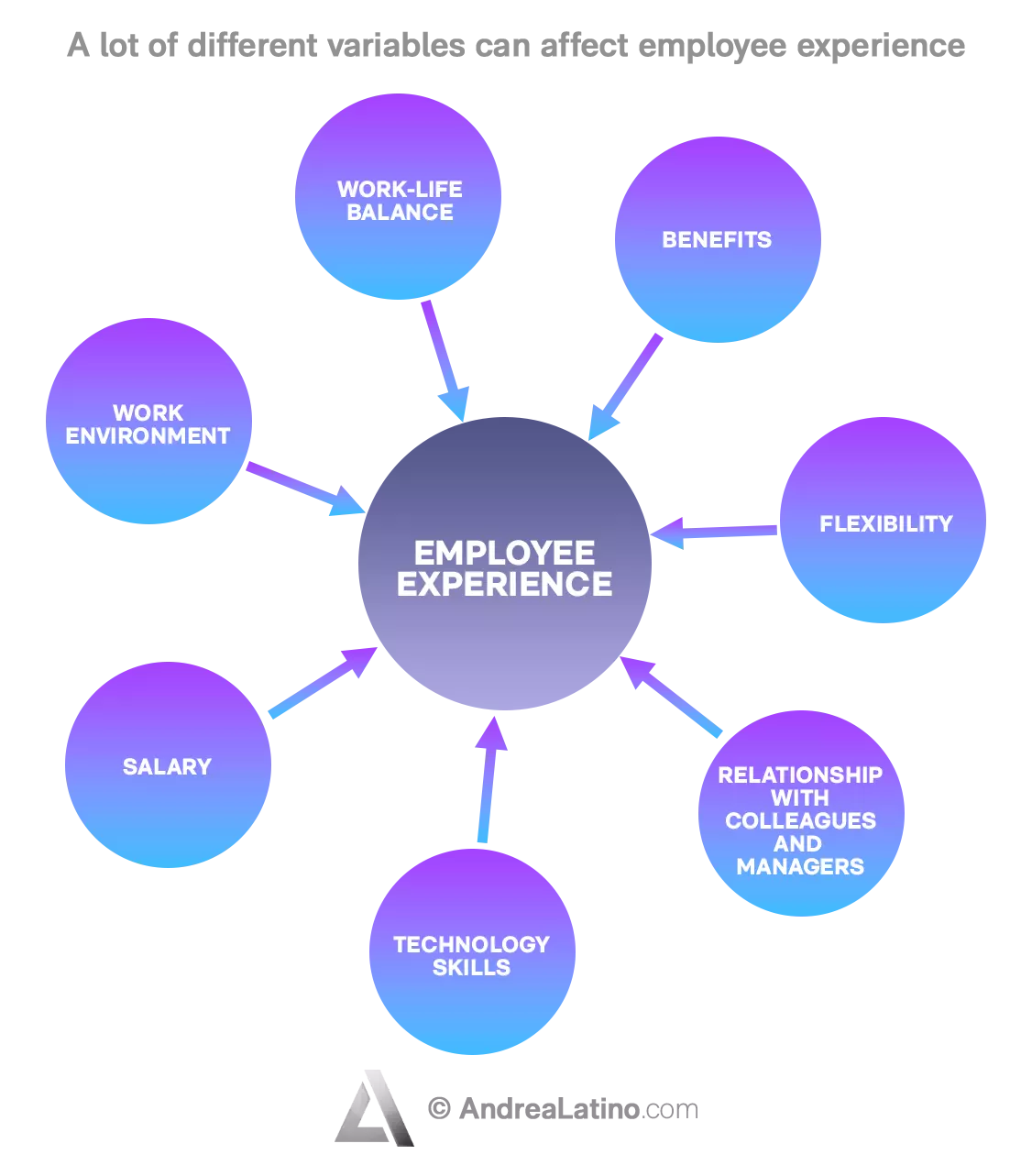
As already extensively mentioned, employee experience is a concept that is gradually coming to life in many industries. Suffice it to say that Airbnb and Nike have created the dedicated role of Chief Employee Experience Officer to professionally manage long-term business-employee relationships.
In fact, employee experience is the result of every interaction between the person hired and their employer, from the first to the last contact with the company. A file that encapsulates events, impressions, and emotions, on the basis of which to forge an overall, qualitative evaluation. An evaluation that the company must strive to make positive if it wants to increase employee engagement and initiate a sustainable growth model for its business.
Essentially, the value of the experience depends on a number of elements such as the work environment, flexibility in managing time and goals, relationships with colleagues and managers, the previously mentioned work-life balance (which differs from person to person), the ability to exploit technological devices to simplify tasks, salary, and the presence of benefits.
Employee experience: how to best manage it
Any organization that wants to distinguish itself from the competition and gain a competitive advantage will soon have to consider the employee experience as a priority. The view of the future places the employee at the center of everything and aspires to improve the totality of employee relations: work processes, tools provided, business organization, and so on. Everything with the aim of improving overall satisfaction and therefore job performance.
DOWNLOADABLE FILES
- Employee Experience Canvas – Download now!
Building an effective employee experience obviously requires a prior study since it intervenes in the development of psycho-cognitive feelings related to the benefits assured by work. And they won’t necessarily be positive feelings: they may vary day by day since they arise from the two-way correspondence between worker and corporate ecosystem. This means that employee experience is a dynamic process, which is formed and transformed throughout the whole work journey.
What are the goals of employee experience?
Employee experience aims to transform a potentially monotonous and demotivating work career into an exciting and constructive journey with undoubtedly positive implications for the sponsoring company. It is a journey that is traveled in a bottom-up direction (i.e., starting from the employee’s needs) and is supported by technology to build a new culture made of individual and collective values. We could recognize 3 predominant goals:
1) Build a positive work environment, even if it means simply equipping employees with modern laptops or adopting a flexible smart working policy. Even the smallest touches can influence an employee’s experience and enhance motivation and engagement
2) Increase productivity by shortening the operations entrusted to HR. Indeed, often even the simplest processes such as vacation requests, filling out work schedules or updating personal data require too many steps, thus reducing the time employees can invest in their actual work. HR can fight this by adopting user-friendly software to speed up bureaucratic tasks and increase employee productivity
3) Retain employees for a long time, considering today’s trend for which nearly a quarter of workers change jobs every three to four years. And the motivations that are most popular involve compensation and interpersonal relationships. Excellent experiential planning could buck this trend through relationship development among staff, constant feedback on performance, and immersion in company culture.
An example of perfect synthesis between these three factors comes from the Scandinavian countries, where employee wellbeing is prioritized. With a shorter workweek (on average, 36 hours) and longer vacations (typically 5 weeks of paid leave), Scandinavian workers can boast an excellent work-life balance.
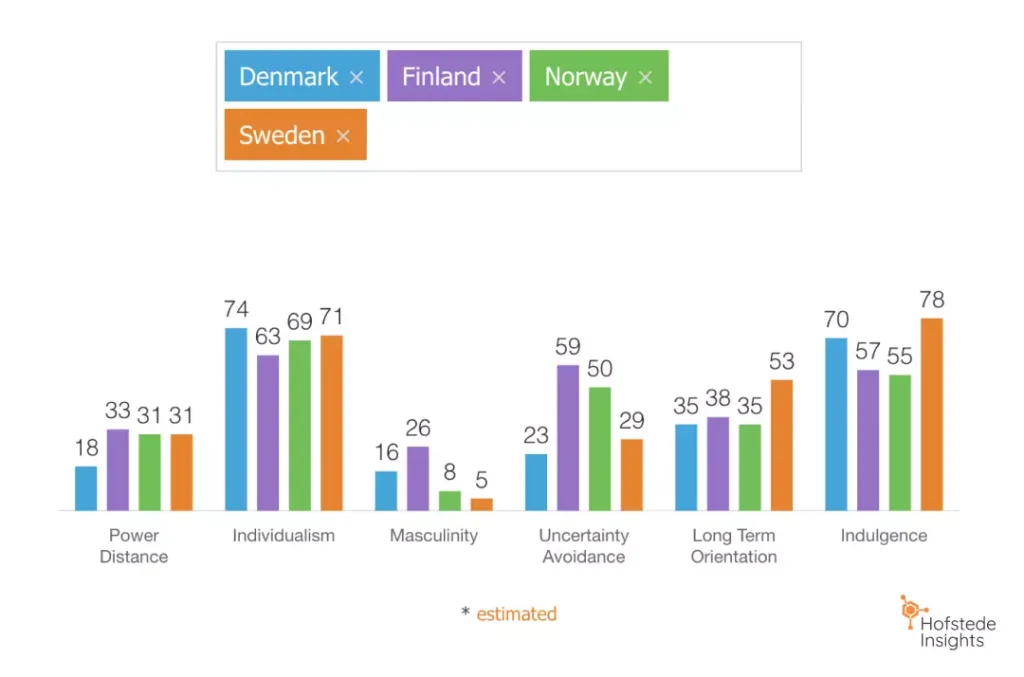
Actors and Pillars
Key actors and pillars of the employee experience
HR can implement strategy, initiate change, and directly influence the employee experience, but they are not alone in managing it. In consciously shaping an optimal pathway – that leads to sustained and diligent employee engagement – they are supported by a range of actors. Jacob Morgan, author of four bestselling books on the future of work, points to the following:
- • the company’s CEOs and executives, who communicate missions and goals by making employees identify with them
- • the managers, who challenge, encourage workers and reward their achievements
- • somewhat all employees themselves, as anyone in the company can help shape positive experiences for others, even if it is simply by providing daily feedback and ensuring involvement in decision-making processes
In a nutshell, an ideal experience can only start with a strong corporate culture.
The three key environments for the employee experience
In addition to the key players, Jacob identifies three key pillars that every company should focus on regardless of size or industry.
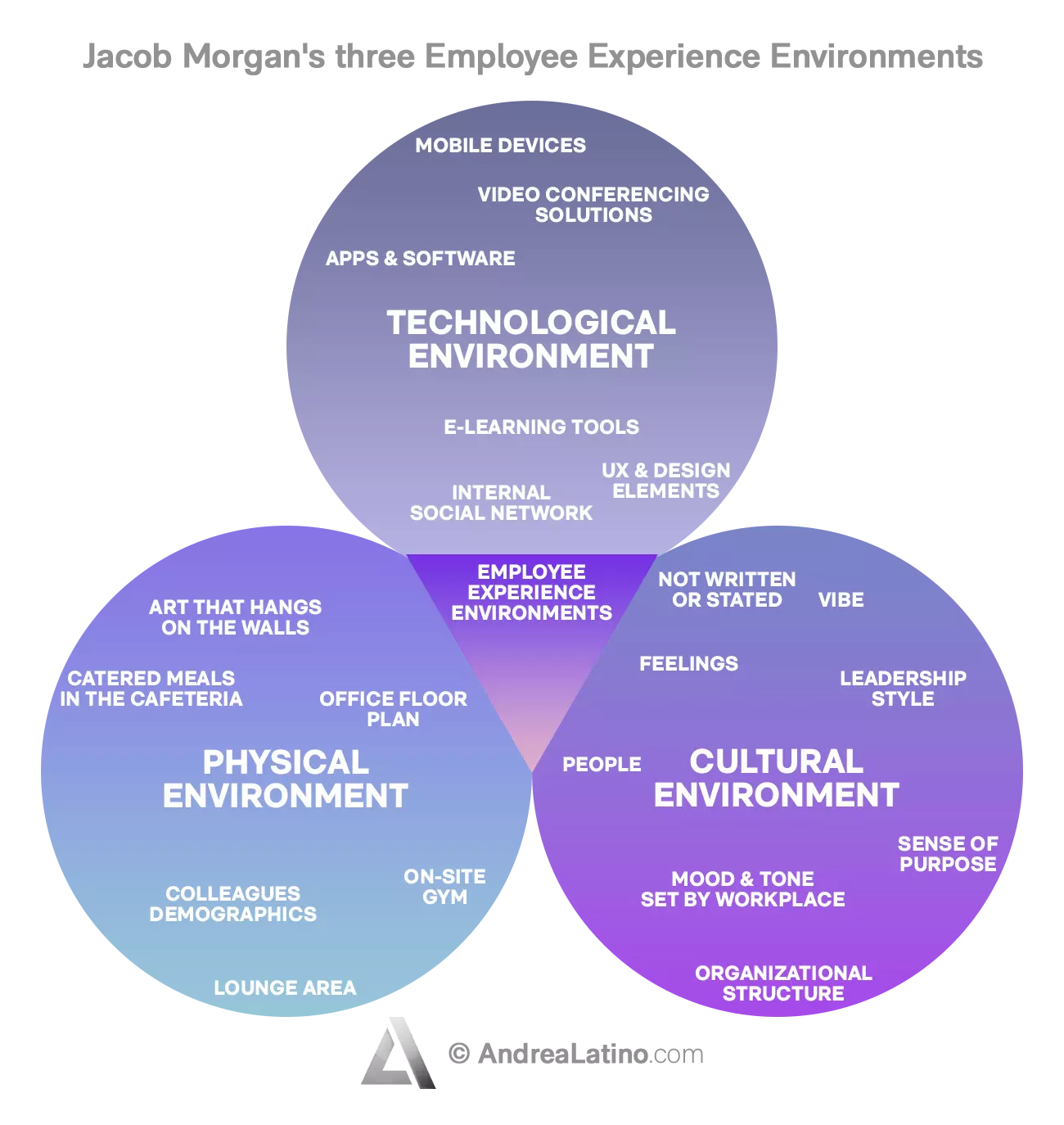
Cultural environment
Mindset, founding values, and feelings about working under a particular brand. It includes the type of leadership and hierarchical structure, and does not forget meritocracy. The ideological aspect defines the strength of the emotional bond between employee and workplace, and is therefore indispensable for the creation of a compact, close-knit and, consequently, profitable team. Today, one is no longer satisfied with mere monetary incentives: what is required is a professional environment that values each person’s abilities, so as to facilitate their tasks and unleash their aspirations.
Technical environment
The set of tools needed to actually get the job done as efficiently as possible. From this perspective, leaders can identify functional tools by basing their decisions on factors such as ease of communication, transparent information flow, clear project management, and the level of technological understanding of teams. Speaking of technology, the importance of digital is almost taken for granted, as it now permeates employee relations from the moment of application and helps making a role in the company more attractive. But technology doesn’t have to be taken for granted: feedback with workers can help understand the means they are most comfortable with.
Physical environment
Building and office characteristics – beginning with air quality, type of lighting, architectural and engineering modernity – directly affect employees’ ability to concentrate, wellbeing, creativity and performance. In fact, “physical environment” could mean anything that stimulates the senses in order to alleviate and make the employee experience in the workplace pleasant (a comfortable chair, therefore, does not only concern the realm of design).
To recap
Instability in any of the three pillars can negatively affect the employee experience. Therefore, these are issues that must be dealt with as much individually as mutually, consciously conceived and designed. The happy coexistence of the cultural, technical, and physical environment ensures the respect and the mise-en-scène of certain prerogatives such as:
- • work-life balance, so that the personal sphere is not affected by the work sphere
- • the flexibility of the work space, which listens to the employee’s requests and meets them even beyond strictly work-related needs (through elastic hours, smart working, day-care in the office)
- • coaching and training, through special programs and the willingness of more experienced colleagues to share their skills with newcomers in order to facilitate their professional growth

Do you have a Operations & Human Resources challenge to tackle? Let’s face it. Together.
C-levels from these companies (AND MORE) relied on my expertise to overcome thEIR CHALLENGES IN THIS AREA. And you can, too.
Can I help you?practical Insights
What are the results of a good employee experience?
From a more purely practical perspective, the primary outcome targeted by companies capable of implementing an effective employee experience is to increase productivity, financial performance, and market value. Statistically, companies that invest in a better employee experience make 4 times more profit. Nearly 40 percent of them then report growth in performance, and just as many companies confirm that employee wellness positively impacts on customer satisfaction.
Ultimately, it is certified that a good employee experience sharpens creativity and boosts business innovation. And it affects engagement: if employees live their work negatively, they risk losing motivation despite the fact that they may like the task itself. Of course, a number of external factors over which the business reality has no control could also change workers’ zeal in a worse way, but a good employee experience intervenes precisely to mitigate these effects.
Employee experience: the contribution of digital (and non-digital)
Digital tools are the backbone of the employee experience: a proper strategy cannot avoid using technology to plan and support the entire employee journey. Starting with People Analytics software (such as Sift or Personio), which allow HR departments of any company to track the health and progress of its offerings to employees and understand which strategies are effective, which areas are problematic, and which mistakes to avoid.

For example, the data might detect excessive staff turnover in a certain department, or find that there was a lack of trust among teams about a new product, or that the onboarding of new colleagues was superficial and failed to convey the real values of the company. But digital possibilities for providing overall control abound: think of programs to facilitate communication between employees, supervisors, and managers such as Trello, or cloud-based sharing services that allow shared, simultaneous performance of work even remotely, such as Google Drive.
Technology supporting the experience
Digital equipment is now considered an indispensable support for every stage of the employee journey. It starts with video interviewing and gamification during the recruiting phase, continues with smart working to foster collaboration and flexibility, and offers digital mentorship and online brainstorming for engagement and empowerment, all seasoned with the use of social platforms and mobile media.
There are truly many digital solutions that can be used to create a positive work environment, regardless of whether it is physical or virtual. To name a few: pulse surveys (a short, quick questionnaire that is periodically sent to employees), performance reviews, 360-degree feedback, inbound employee surveys, and outbound employee surveys.
Yes, there are software for these functions as well. Take Qualtrics, for example: with surveys to measure employee satisfaction, you can monitor changes in engagement and step in to improve their experience. And this is no minor data, as it may affect profits.
But is it just because of technology?
Technology certainly ensures better performance and greater employee engagement. It remains essential for urging productivity and cooperation, and for gathering objective information about the psychological situation of staff. But it is not the ultimate goal nor the only means that characterizes the employee experience. The latter is, in fact, strongly linked to emotional and individual factors, and is based on an innovative mindset that gives importance to the values in which the employee believes. And this is precisely the starting point for designing the ideal experience: employee desires are the key to attract, motivate, and retain the brightest minds.
6 steps to build your employee experience
Monitoring employee experience in 6 easy steps
As might be guessed, designing the employee experience is a task as important as difficult. It involves a multiplicity of actors, environments, and tools, as well as having to maintain a certain qualitative constancy throughout the employee relationship. And, considering that it is a personal measure, ideally tailor-made for each individual, it gets complicated. That’s why I offer 6 simple tips for keeping track of the employee experience processed by your company.
1) Set concrete goals
Designing the technological experience of employees today means nullifying that gap between the habits of non-work life and the ways in which they act in the workplace. It means first of all aiming to digitalize every business process, starting with the exchange of information between colleagues and with superiors, and ending with synchronizing on the same online system every required accessibility. Proceeding by well-defined goals will enable you to carry forward the subsequent measures planned with management, and you will be able to evaluate the success of the initiative more accurately.
Most importantly, consider that talented individuals are more attracted to organizations that manifest clear purpose and values, experiencing them authentically. Following a consistent trajectory from the start creates a fair hiring process based on objective and rigorous assessments that begin with the consideration of desired performance. This is where the first results are seen: data show up to 10 percent higher performance leading to increased revenue and reduced turnover.
2) Develop a strategy that is based on design thinking
Given the status quo of company and staff, set the goals and those responsible for implementation, all that needs to be done is to identify the most appropriate measures to put the employee experience strategy into practice. Now, a great way to figure out how to proceed would be to employ design thinking, which is an active thinking approach that seeks the desired solution rather than simply eliminating perceived problems.
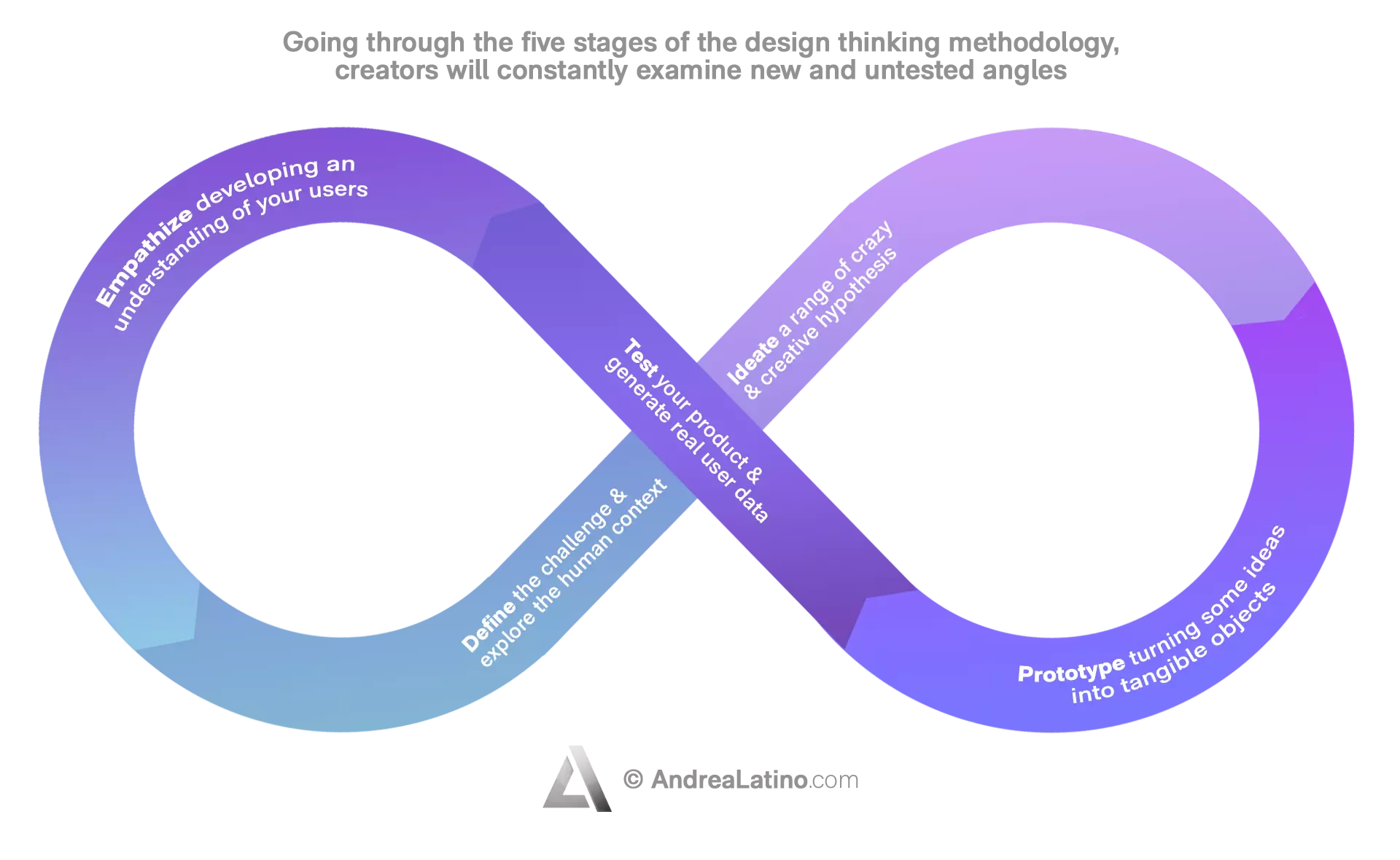
And the solution might lie, for example, behind the adoption of a new technology, or behind deepening the values and passions that drive employees and potential ones individually. Thinking about how they might react to feedback and challenges would facilitate the compilation of a development plan capable of highlighting strengths and minimizing weaknesses.
Analysts, on the other hand, believe that the right tactic is to turn the strategy around and design the employee experience according to two criteria: personalization (focusing on each individual and his or her psychological and emotional needs) and bottom-up direction (starting from the very needs of the employee, trying to classify them through analytical data). Thus it will be possible to build close-knit teams, a comfortable work environment, and a culture that engages people in every aspect of their lives.
3) Adopt a holistic perspective
HR departments often struggle to abandon the habit of dealing separately with the various objectives their role requires them to achieve toward employees (engagement, training, compensation systems, employer branding, promotion of corporate culture, and so on). For each task, a dedicated strategy. Yet, the employee will not conceptualize the various initiatives as distinctly separate, but rather as parts of a single process aimed at shaping their perception of the company they work for.
It is a process that begins from the very first contact, during the job interview, and gradually builds up in the candidate’s mind a hypothesis about how it could change their life both professionally and privately. For this reason, HR departments will have to reform employee experience strategies from a holistic perspective, adopting the employee’s point of view and considering their needs on a global scale.
4) Put yourself in the employee’s shoes
So, the trick to mastering the employee experience seems to lie in reversing business processes, tools and organization. How? By taking an “employee-centric” perspective. Putting yourself in the employee’s shoes means trying to understand their feelings in order to build a positive work atmosphere in which everyone can feel comfortable. The people-based mindset puts the employee’s needs and desires in the workplace first, after being measured using big data and analytics, carefully collected, and managed by a talent manager.
But commitment is linked to many variables, not just operating in a comfortable environment. There is a need for caring managers who give confidence and assign responsibility, who extol excellence and opportunities for growth. After all, a satisfied employee is the company’s main testimonial and, thanks to the resonance provided by technology, can attract new qualified talent. A kind of loop is created: competent employees provide a competitive advantage over competitors, and their wellbeing ensures their long permanence in the company.
5) Treat employees as if they were customers
You might ask, isn’t it enough to adopt a holistic perspective and put yourself in the employee’s shoes? Maybe so. But let’s think about it, confirming the economic success of an organization depends on end-user satisfaction. The customer is always right, right? That’s why marketers do everything to facilitate them. And who has to deal – directly or indirectly – with customers if not your own employees? Insightful businesses have realized that in order to grow and still please your target audience, you need to pay equal attention to your corporate team members.
By offering employees similar treatment to consumers, they are more likely to provide better customer service in turn. After all, any positive interaction can result in emotional, social involvement and openness to innovation. And internal branding represents an opportunity to experience the brand just as usually happens to those who use the service or buy the product. It is the first step toward a proactive journey, providing opportunities to acquire new skills, work with new people, and enjoy growing autonomy. Engaged employees improve the customer experience.
6) Measure your success
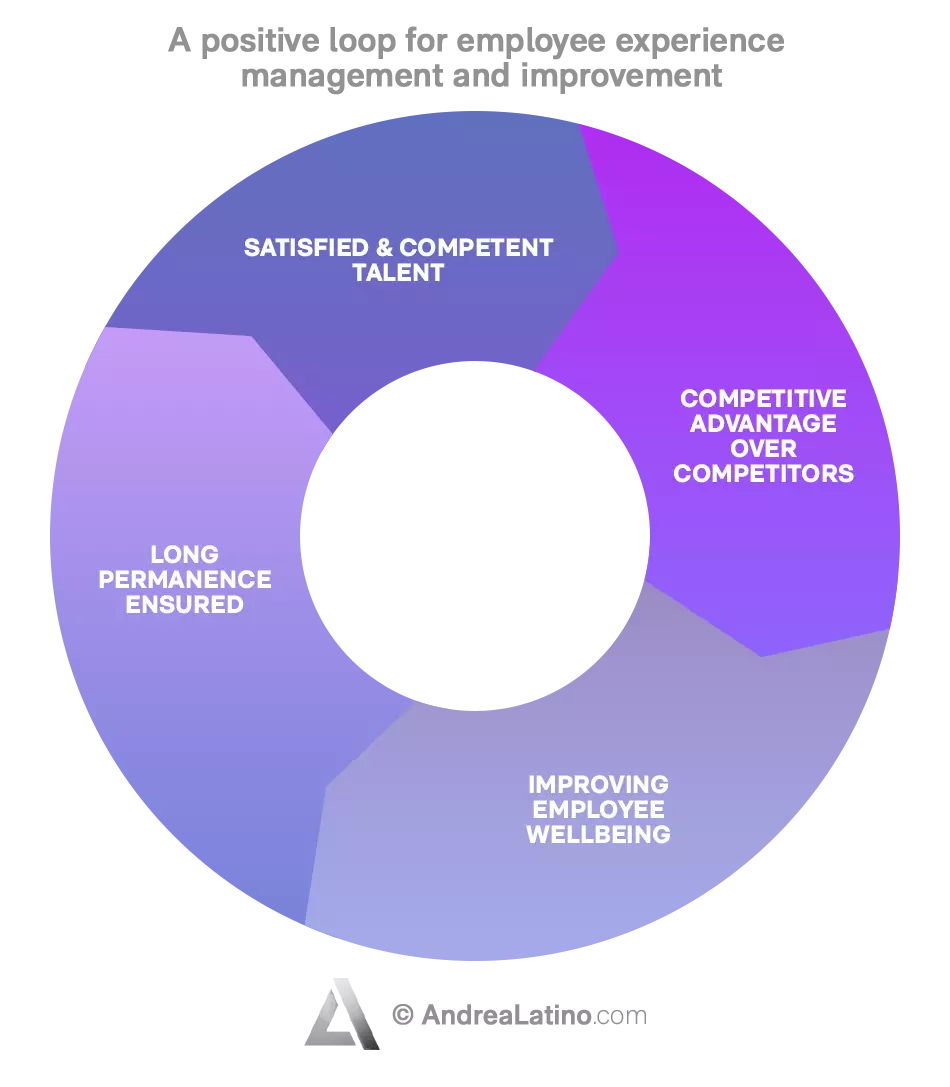
Approximately three months after adopting a new employee experience strategy, you should begin to see some results. Institute continuous and pervasive feedback systems to monitor the levels of sentiment and engagement achieved in the workforce – employees, in fact, crave recognition for their work. They need to feel that their performance has been sincerely and fully scrutinized and evaluated.
Receive, then, as much input as possible from employees, questioning them through planned pulse surveys and sending out additional surveys. Next, don’t forget to gather the opinions of those who have recently been hired but also those who have recently left the company. If an employee expresses a positive termination experience, they will likely remain a proud brand ambassador and help solidify the brand’s reputation.
towards the conclusion
Employee experience and employee engagement: differences and similarities
Employee experience and employee engagement are two closely related concepts that are often mistakenly used interchangeably. True, both relate to corporate culture, the work environment, and interpersonal relationships with employees. Yet, they are not the same thing. Let’s cut to the chase: employee engagement has a short-term goal, which is to gratify the immediate needs of the worker. In contrast, employee experience is a long-term measure that directs every business process toward knowing, anticipating, and gratifying the expectations and values of both current and potential resources.
To create internal engagement with the brand, it is first necessary to build a positive experience for each employee. So, engagement depends on the employee experience and at the same time it affects its effectiveness. In order to motivate employees, it is necessary to establish an important emotional connection with the reality they are part of and make them feel included, so as to unify personal ambitions with those of the company. In any case, today, being able to engage is no longer simply a competitive advantage, but a real requirement for a company that does not want to be overpowered by competitors.
Human Resources professionals have always given some importance to employee engagement, as an employee actively aligned with corporate guidelines will generally perform better. And in order for this to happen, it is inevitable to create a synergy between the company’s image, the employee’s journey from the first meeting until discharge, and the company’s overall cultural, physical and technological environment. However, when considered individually, employee retention techniques may be only temporary and thus provide a short-term motivational boost; a comprehensive experience, on the other hand, is based on an all-inclusive, long-lasting look.
| Employee Experience | Employee Engagement |
|---|---|
| Is a long-term measure | Has a short-term goal |
| Directs every business process toward gratifying expectations and values of resources | Refers to the immediate needs of the worker |
| Affected by Employee Engagement | Depends on the employee experience |
| Is based on an all-inclusive, long-lasting look | Provides a short-term motivational boost |
What is the future of employee experience?
The employee experience will increasingly rely on digital. Just consider the invasion of virtual assistants among private home technology: Siri, Alexa and their friends could facilitate communication between employees and human resources. Spoken but also written communication, perhaps through tools for real-time conversations within a single channel like Sift, enabling quick exchanges with a specific person on a given topic.
Investments on employee experience are growing side by side with those dedicated to automation and robotics. A trend that, despite what one might think, does not signal a dehumanization of work, but rather a desire among companies to provide real help to people and integrate the human workforce. The digital age has raised workers’ expectations, so ensuring a positive experience has become a huge achievement for companies in terms of competitiveness and employee retention.
Companies of tomorrow will be paying more and more attention to distinguish need from genuine desire to work. They will be able to listen one by one to their employees and respond dynamically through the use of digital tools. They will adopt policies to retain talent, attract the most motivated ones and consequently increase human capital.
Conclusion
Engagement levels easily risk going through lasting and generalized crises. The solution may lie in changing the focus, meaning concentrating not so much on engagement per se but on what drives it. And thus, on building an excellent employee experience. So, first, make sure you are up-to-date on new technologies such as Artificial Intelligence or robotic automation: they tend to reduce manual and repetitive actions that take away valuable time.
Digital devices, in fact, will be increasingly crucial in letting HR focus on strategies best suited to foster employee engagement and productivity. Employees, for their part, will be able to focus on corporate and personal growth goals. After all, the employee experience must be designed to identify complicated or chaotic touchpoints and resolve them, meeting the real needs of the members of an enterprise. The suggestion, therefore, is to adopt a model capable of analyzing and interpreting the emotional and identity dimensions of work while creating a stimulating, inclusive and formative environment.

An important message for you
Hi there! I hope you found this article insightful.
Allow me to introduce myself. I’m Andrea Latino, the author of this article.
I have spent over a decade earning the trust of world-class multinationals, institutions and startups for their digital and innovation initiatives.
Are you curious about my story and how I could help you?
See how I can help youStay in wonderland
Let me show you how deep the rabbit hole goes.
Here are more Articles & Guides:

Articles & Guides
Digital Communication: how to develop an effective one
March 15, 2023
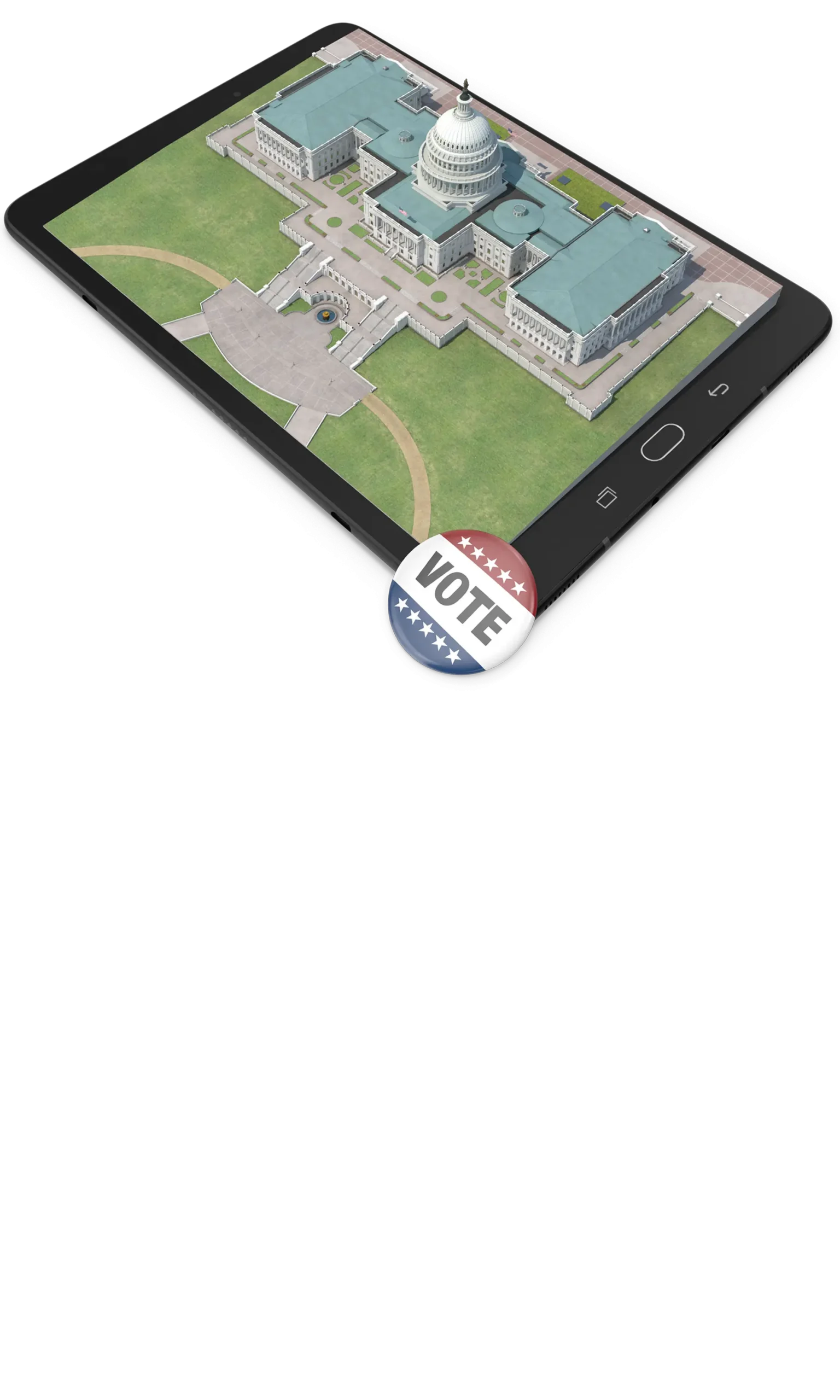
Articles & Guides
Digital Political Communication: doing politics in the age of social media
March 15, 2023

Articles & Guides
Digital PR: public relations in the digital age
March 15, 2023

Articles & Guides
Digital Public Affairs: how to employ effective institutional communication
March 15, 2023
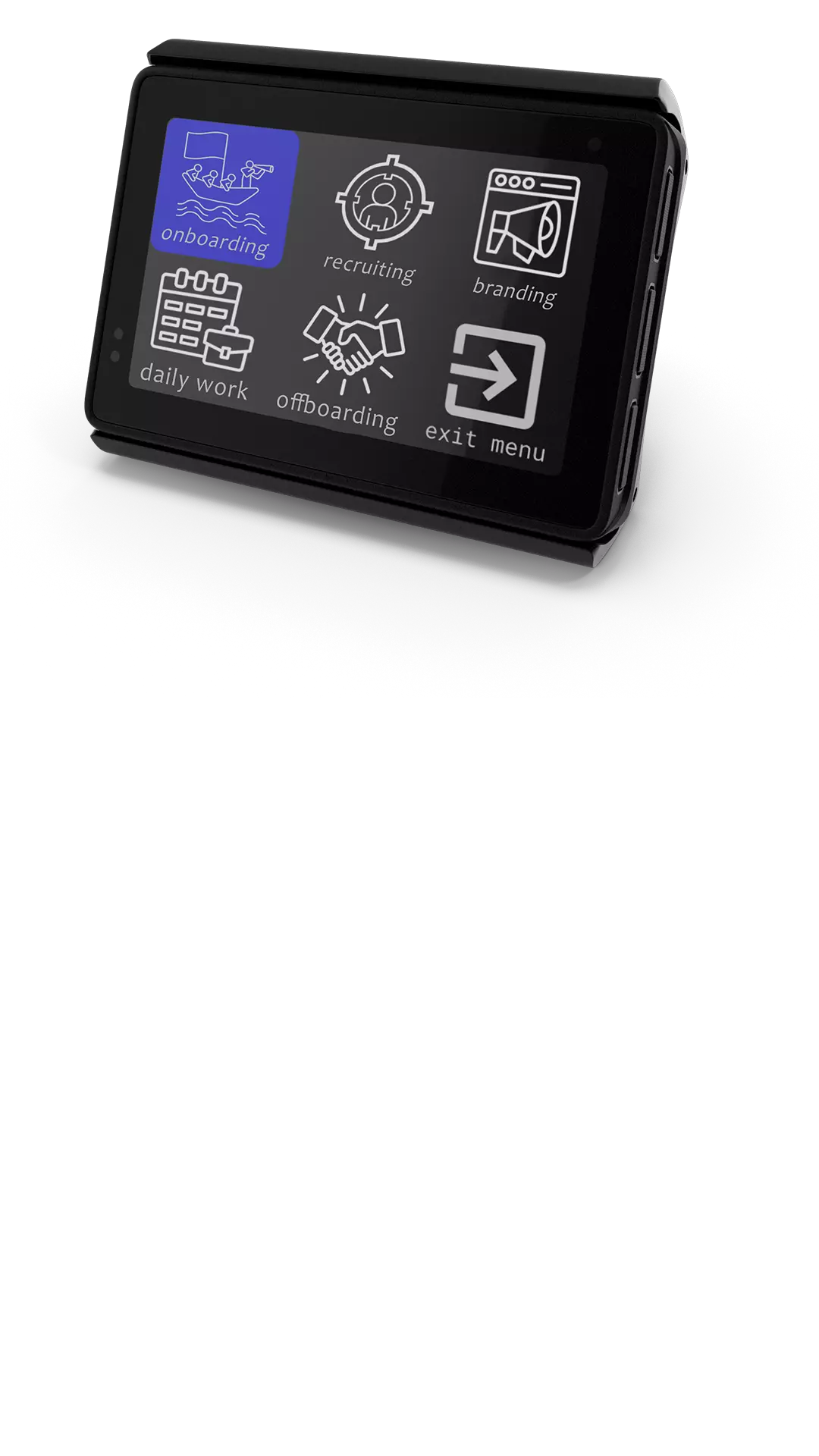
Articles & Guides
Digital Transformation for Human Resources: stages, tools and new skills
March 15, 2023

Articles & Guides
Editorial Plan: how to build a winning one
March 15, 2023

Articles & Guides
Employee Journey: how to track employee experience in 6 simple steps
March 15, 2023

Articles & Guides
Innovation Strategy & Innovation Management: best practice and examples
March 15, 2023

Articles & Guides
Digital Tools & Innovation Resources: the best sources for your innovation process
March 15, 2023

